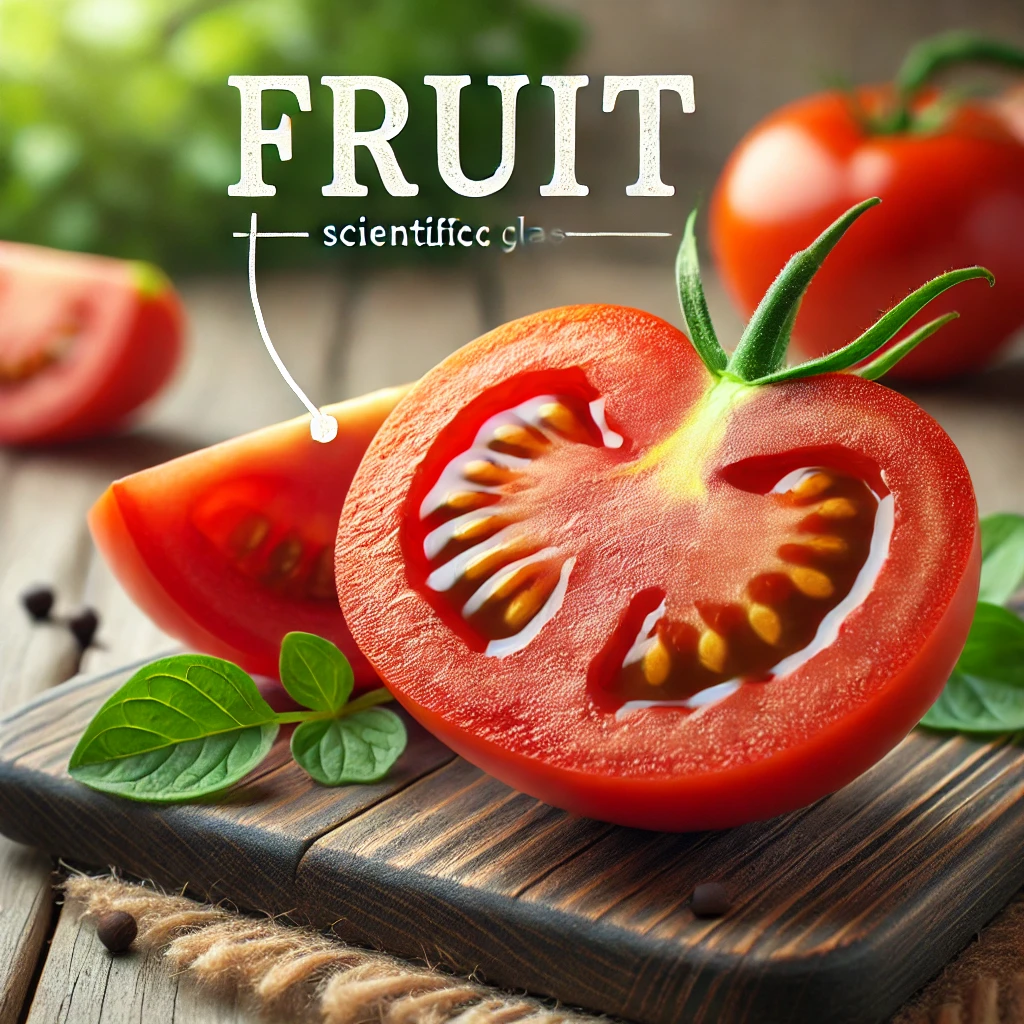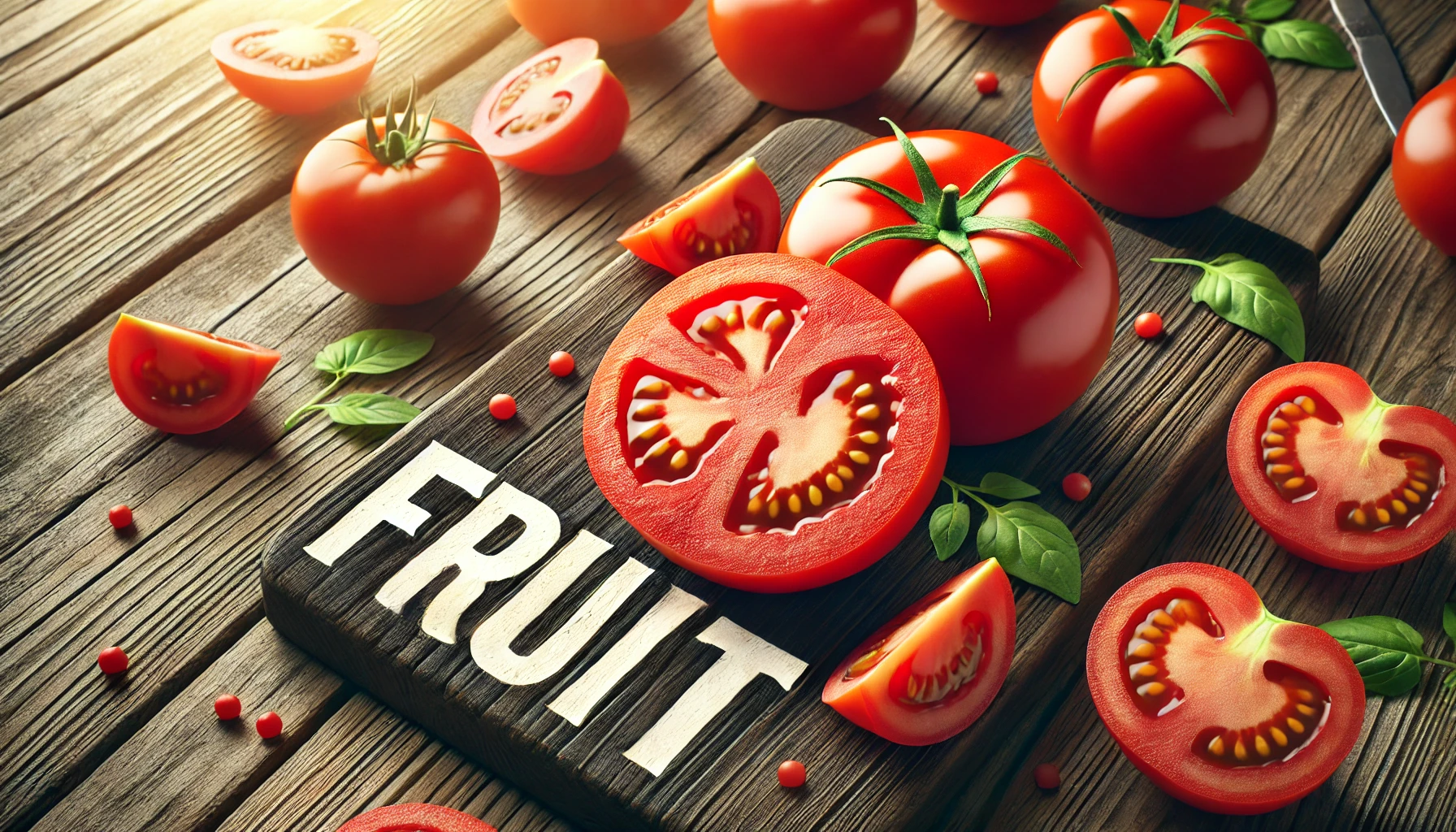Is a tomato a fruit lets find out…
Tomatoes are ranked as the third most popular and versatile vegetable, after potatoes (no-fun) and lettuce. They are used in! The tomato is adored the world over—a red round fruit (though often yellow or green) we eat like a vegetable. One fact has led to debates for centuries: Botanically speaking, is a tomato a fruit?
Well, that is what this informative blog post will delve into — the exciting stuff of tomatoes themselves and why they are botanically seen as fruits but tomatoey-culinary treats can also be qualified as vegetables— where did all the confusion in history stem from, and on a lighter note how does it matter to culture and cuisines alike? And at the end, you will finally know what to reply when someone asks you whether a tomato is a fruit or vegetable.
What is a Fruit? What is Botanical?
First things first, let’s clear up the discussion about tomatoes by asking what squash and pumpkin have to do with how anything can grow as a fruit in botanical contexts. At its most basic, a fruit is simply said to be the matured ovary of a plant, bearing seeds. Fruit is considered as the seedbearing part of a flowering plant, it means that plants as they have nuts, seed and also fruits.
Here are the botanical parameters for a fruit:
Flower to Fruit: Fruits grow from the fertilized ovary of a flower.
Seed containment: They also tend to contain seeds like the pips of cherries. However, there are exceptions such as cultivated seedless forms with no seeds within them.
Role In Reproduction : Fruits aid a plant to reproduce by seed dispersement.

With this definition, fruits are more than the sweet, fleshy, juicy product of a plant—like apples and oranges. Many crops known as vegetables, thanks to culinary arguments, are really fruits botanically speaking: cucumbers, pumpkins, zucchinis … tomatoes.
In Which We Learn Why Tomatoes Are Botanically Fruits
As such tomatoes have all the botanical traits of a fruit.
They ripen from the “flower” (ovary) of the tomato plant: After pollination, a tomato plant’s flower ovary swells and turns into what we eat as a tomato.
Tomatoes have seeds: Inside every tomato are hundreds of little seeds which, if planted under proper conditions, will sprout into new tomato plants.
Plants rely on humans or animals to facilitate their reproduction, and tomatoes are in the class of helper plants.
Ergo, scientifically speaking, the tomato is absolutely a fruit. It is considered a “berry” because it is fleshy and contains seeds, the whole structure of which emerges from a single ovary.
The Culinary Confusion: Tomatoes As Vegetables
Although scientifically a fruit, tomatoes are treated as a vegetable in the culinary world. That is, in large part because the culinary definition of a fruit or a vegetable is determined by their uses, and not how they are biologically classified.
We all agree about what makes a fruit different from a vegetable.
A fleshy fruit with an outer rind or skin is typically sweet to the taste or sometimes tangy. They are used in cooking, as well as in preserves such as jam, jelly, marmalade and other applications which involve heating— strawberries or blueberries (as heated beyond room temperature) would not be considered non-heat-treated unless they were given a hard preparation to purify them. Such as apples, bananas or strawberries. Vegetables are on the opposite side of such a flavor scale, and as savory or very sweet foods, they are typically used as entire meals with soups, salads or stews. Carrots, spinach & potatoes are just some of the vegetables
Tomatoes, meanwhile, offer a hint of acidity and a touch of sweetness, straddling the divide. They are frequently used as a savory flavoring in cooking, much like vegetables, or served in dishes similar to….イInside the culinary scenery. In addition, the vegetable-shopping public is likely to continue thinking of tomatoes as vegetables because they are often located in that section with other companion vegetables.
Why Tomatoes Are Vegetables In The Kitchen
Taste Profile: Tomatoes are not as sugary for a powerful flavor and also work best, thereforefor examplech such as saladsr desserts, salad spinachese soups.
Culinary: Although tomatoes are technically fruit, they are used more commonly in savory cooking (by nature of their flavor)—vegetables—and less so in conjunction with flavors and applications generally associated with or defined by other fruits.
Myth: Tomatoes are widely considered a vegetable since tomatoes are used in cooking, found on the shelves with other veggies at grocery stores, and do not seem like sweet fruits.
Law of the Tomatoes: US Supreme Court Case
To the surprise of many the United States Supreme Court has even taken on whether or not the tomato is a fruit or a vegetable as one of it’s questions. The fate of tomatoes in certain legal realms was sealed when a court ruled on what would prove to be an albeit trivial but long-lingering question known as Nix v. Hedden, 143 U.S. 271 (1893).
Background of the Nix v. Hedden
The case originated over a tariff issue. The US has instituted a vegetable import tariff, but not one for fruit. John Nix, a tomato importer, sued Edward Hedden, the tax collector of the Port of New York, arguing that tomatoes were fruits and not subject to taxation.
Nevertheless, the court decided unanimously in favour of Hedden: tomatoes were classified as vegetables for tariff purposes. Although tomatoes are scientifically fruits, In Nix V. Hedden, the justices allowed a tax on them as though they were vegetables, stating that in common parlance and in commerce “fruit” is not restricted to botanical and scientific meanings and that where congress is silent words must be given their ordinary meaning.
The Supreme Court’s Decision
The Supreme Court held that since tomatoes are regularly consumed along with other vegetables or in the same course, and were cheaper than any fruit when both of them were brought to duty would imply that tomatoes would be treated as vegetable. This ruling demonstrated that the categorization of foods can be different if we use scientific or practical criteria.
Future Repercussions of This Move
Nix v. Hedden led to the designation of the tomato as a vegetable for the purposes of regulation, but since it is botanically a fruit this means that Finley’s introduction was correct; therefore in common culinary contexts they are often categorized as vegetables; for example, ripe tomatoes feature in many salads and sauces just like traditionally “vegetable” crops. Due to this comment, tomatoes are still classified as vegetabes when it comes to trade regulations even though they are fruits in the botanical sense.
The Tomato, From Wild to Global Marketplace
The tomato’s rise from a mealy little cherry not native to Italy, to the worldwide popularity we know today (apart, of course, from the fruit-versus-vegetable shtick) is irresistibly fascinating. We know tomatoes are everywhere, lets find out where they come from and why are they one of the most widely used culinary items on earth.
South America, the Tomato’s Place of Origin
The tomato as it is known today has its origins in western South America, specifically modern-day Peru and northern Chile. Native to the region, ancient civilizations like the Incas and Aztecs domesticated a small wild tomato populating southern parts of Panama.
The Aztecs, in particular, are known to have led the first tomato domestication and adoption–they were already eating tomatoes centuries before Europeans even found them.
Europe discovered it too had an odd fruit: the tomato.
The tomato was brought to Europe in the 16th century, originally cultivated by the Spanish colonization of the Americas. Europeans first doubted their tomatoes, partially because they belong to the nightshade family (some of which are poisonous).
For centuries, people feared that tomatoes were poisonous, and they were only used as ornamental plants. Tomatoes did not arrive in Europe until the 18th century when they were introduced and oh so slowly accepted as a culinary ingredient, particularly in Italy where tomatoes become honoured elements of Italian Mediterranean cuisine.
Spread around the world and Cullinary Accomodation
By the 19th century, tomatoes made their way around the globe and had been a part of food globally in cameras ranging from North America, Europe, to even parts of Asia. Today, tomatoes are a staple of many cuisines across the globe; Italian pasta sauces, French ratatouilleMexican salsas and Indian curries just to name few.
The versatility and ability of tomatoes to grow in different climates, on a massive scale have made them one of the world’s leading fruits and vegetables to be grown and eaten. in the world.
A body of literature on the Health Benefits of Tomatoes
Tomatoes are so versatile, and they taste very good and are extremely beneficial to your diet. Fruits or vegetables, however you like to call them, they provide many health benefits.
The Nutrient Profile of Tomatoes
They are low in calories and high in vitamins, minerals and antioxidants.
Nutrient amount per 100 grams A medium tomato contains the following :
Vitamin C: Tomatoes contain vitamin C, an antioxidant that plays a role in supporting immune function, skin health and wound healing.
The health benefits of tomatoes are; they are rich in vitamin A that helps with various eye-related diseases, also contains beta-carotene which combats macular degeneration.
Potassium: A crucial mineral needed to regulate blood pressure, heart function and fluid balance in the body.
Folate: Folate aids in cell function and growth of tissue, especially during pregnancy.
The Tomato’s Star Antioxidant: Lycopene
Tomatoes are rich in lycopene, one of the most important ingredients known in this fruit, which provides the fruit a red color. Given the possible health benefits of lycopene, this antioxidant has become a topic of intense study where:
Potential Benefits to Heart Health: Lycopene could help decrease the chances and possibilities of developing cardiovascular diseases by lowering bad cholesterol (LDL) levels and maintaining more ideal blood vessel health.
Cancer Prevention: Certain studies have shown that lycopene can reduce the growth of cancerous cells and this makes it a potential weapon against certain cancers such as prostate cancer.
It can protect your skin from UV damage (sunburn and premature aging) on exposed areas of the skin.
The good news is that cooking does not seem to significantly lessen lycopene absorption.
The processing of tomatoes increases the bioavailability of lycopene, i.e. makes it more digestible by our body; And this means that lycopene levels can actually end up being higher in cooked tomato products like tomato sauce, tomato paste or even ketchup vs. raw tomatoes themselves.
FAQs
1. Is a tomato a fruit or a vegetable?
Botanically speaking, a tomato is a fruit because it develops from the ovary of a flower and contains seeds. However, in culinary terms, it’s often treated as a vegetable due to its savory flavor.
2. Why is a tomato considered a fruit scientifically?
A fruit is defined as the part of a plant that develops from the flower and contains seeds. Since tomatoes meet these criteria, they are classified as fruits from a botanical perspective.
3. Why are tomatoes used as vegetables in cooking?
Tomatoes have a savory taste and are often used in salads, sauces, and main dishes, which are typically associated with vegetables in culinary practices, even though they are technically fruits.
4. Are tomatoes fruits in all countries?
Yes, botanically, tomatoes are considered fruits everywhere. However, cultural and culinary classifications vary, and in many countries, they are treated as vegetables in recipes and markets.
5. What are some other fruits that are used as vegetables?
Other examples of fruits that are commonly used as vegetables include cucumbers, bell peppers, zucchinis, and eggplants. Like tomatoes, they develop from the flowering part of the plant and contain seeds.

